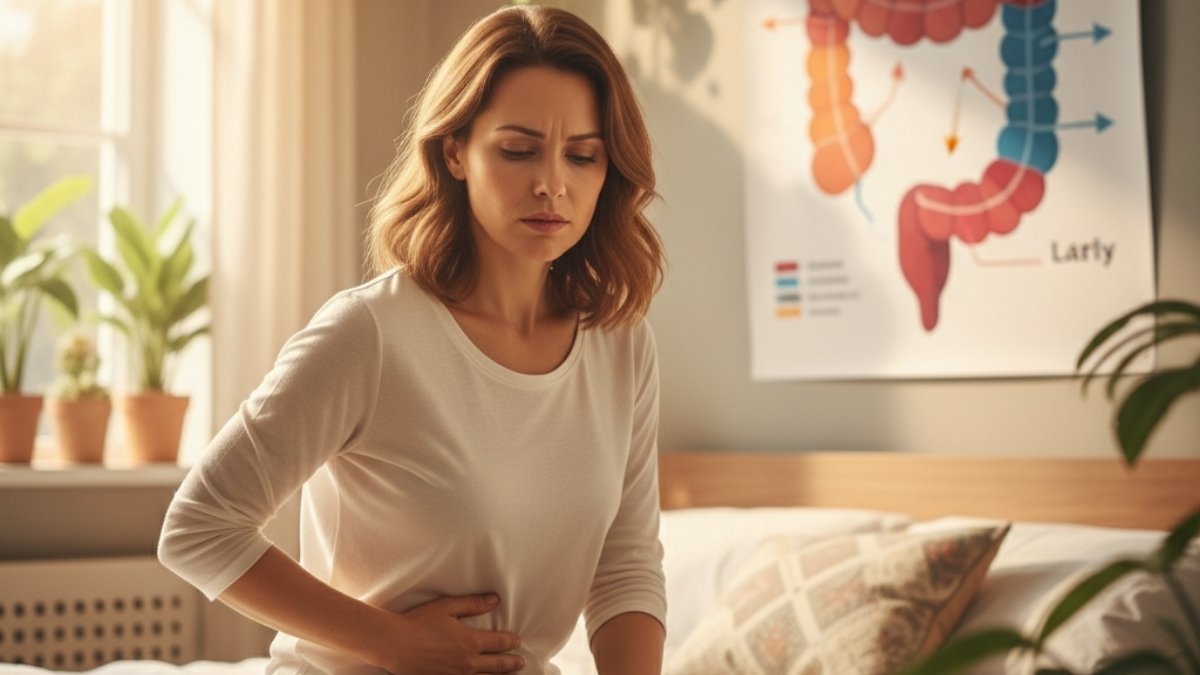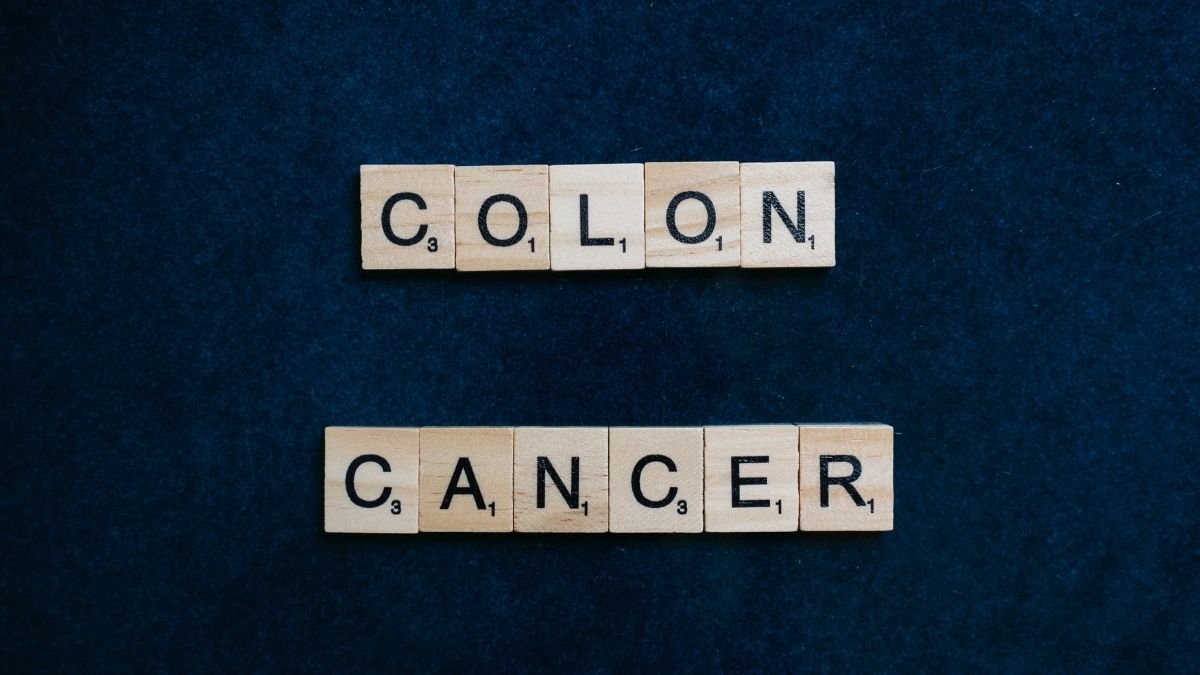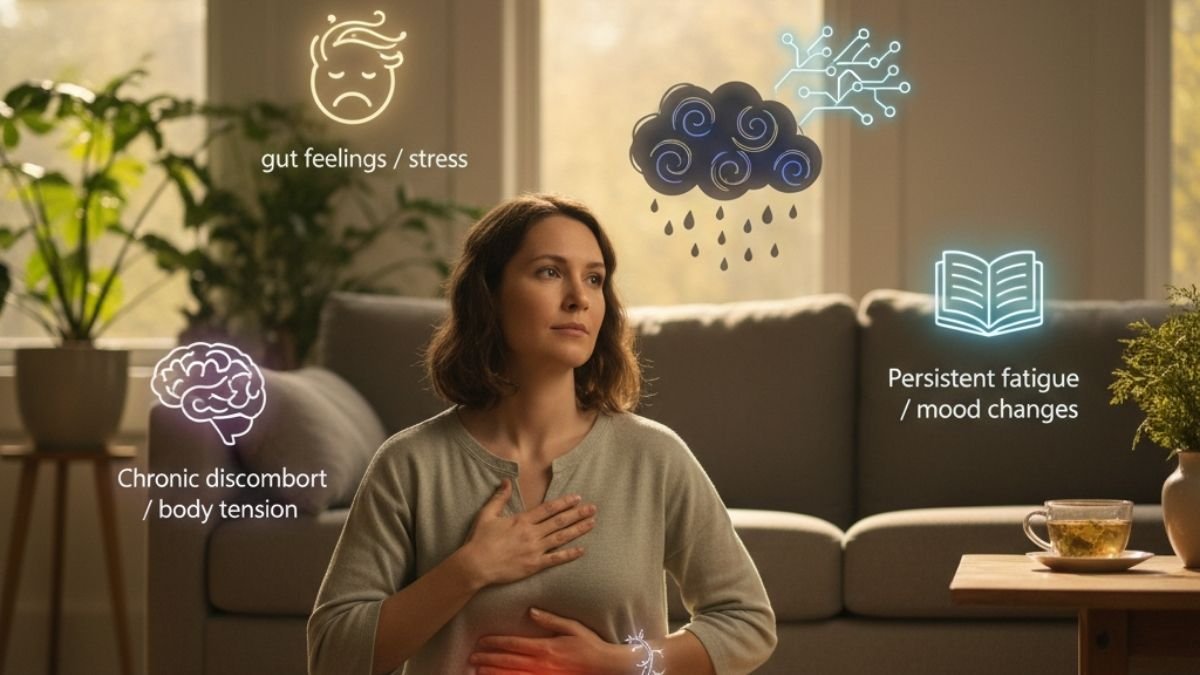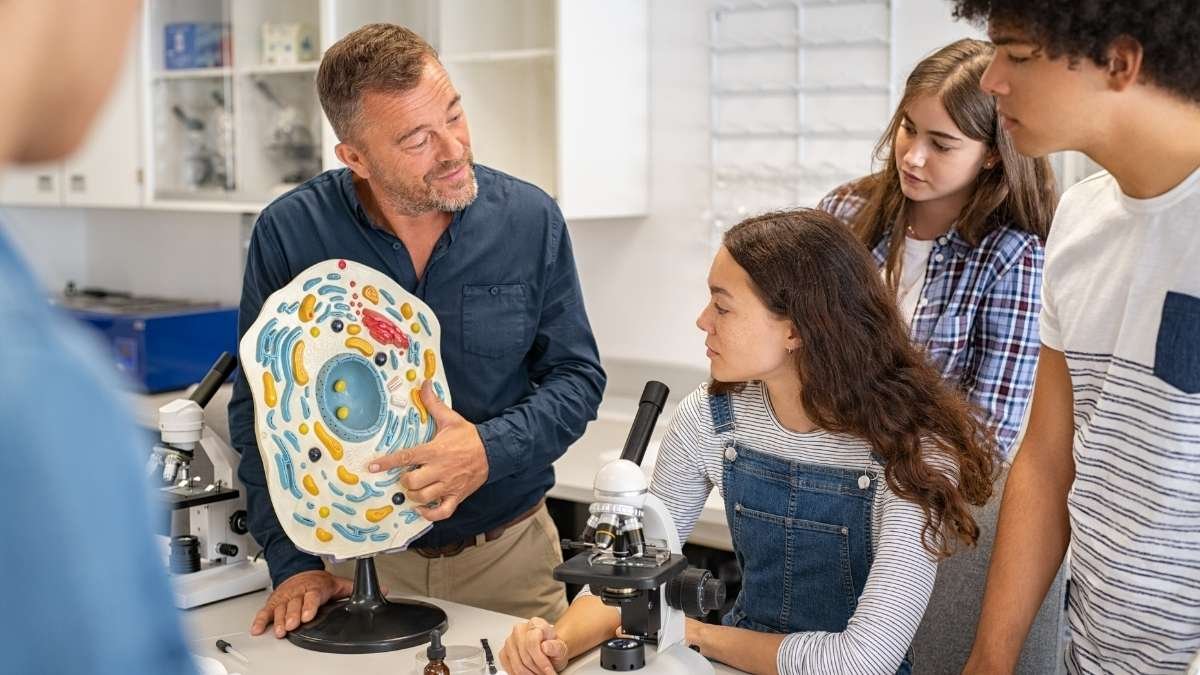
Let’s be honest for a second. You’re in your 30s or 40s. You’re busy. You’re juggling a career, maybe a family, trying to stay healthy, trying to keep it all together. The last thing on your mind is colorectal cancer. That’s an “old person’s disease,” right? Something you file away to worry about after you turn 50, maybe even 60.
But what if I told you that narrative is dangerously out of date?
There’s a quiet, unsettling shift happening, and it’s affecting people just like you. For decades, we were winning the fight against colorectal cancer (CRC). Better screening and treatments meant rates were dropping steadily in older adults. It was a public health success story. But while we were celebrating that victory, a new front opened up. Since the 1990s, the number of people under 50 diagnosed with this disease has been climbing, and it’s not a small blip. It’s a real, sustained, and alarming trend.

The numbers are kind of staggering when you really look at them. Rates of what we now call early-onset colorectal cancer (EOCRC) are rising by 1% to 2% every single year in people under 55. Think about that. It’s become the #1 cause of cancer death in men under 50, and the #2 cause in women in the same age group. In 2023 alone, an estimated 19,550 people under 50 were diagnosed, and 3,750 died from it. This isn’t a rare, fringe issue anymore. It’s a crisis hiding in plain sight.
And this isn’t just happening in the United States. It’s a global phenomenon, hitting developed countries from Australia to Canada the hardest. This tells us something big has changed in our modern world, in the way we live and eat, which is putting younger generations at risk.
Here’s the scariest part: the official numbers are probably just the tip of the iceberg. Researchers found a massive 46% jump in diagnoses right between the ages of 49 and 50. That’s not biology; that’s the “screening cliff.” It’s the moment people historically started getting colonoscopies, and doctors suddenly found a huge, hidden burden of cancer that had been growing silently for years. It’s proof that thousands of people in their 40s are walking around with this disease and don’t even know it.
This is why we need to have a different conversation. A more urgent one. It’s time to stop thinking of this as a distant problem and start understanding what’s really going on.
Contrasting Cancer Trends
Analysis of Incidence and Mortality Trends by Age Group
Population < 50 Years
A Rising Concern: Trends are increasing, indicating a significant shift in disease burden.
Incidence Trend (Since Mid-1990s)
Increasing 1-2% per year
Mortality Trend (Since Mid-2000s)
Increasing ~1% per year
Estimated New Cases (2023)
19,550
Estimated Deaths (2023)
3,750
Population > 65 Years
A Positive Trajectory: Both incidence and mortality are showing a favorable decline.
Incidence Trend
Declining
Mortality Trend
Declining
Specific Case/Death Counts N/A
Ranking as Cause of Cancer Death (2024)
For Men
#1
For Women
#2
This metric primarily reflects the younger population trend in this context.
Your Body Is Talking. Are You Listening? The Four Signs You Can’t Ignore

So, how do you catch something that’s supposed to be silent? The paradox of early-onset CRC is that its warning signs are things we all experience from time to time. A little stomach pain, a weird bowel movement… It’s so easy to brush it off. “I ate something weird.” “It’s just stress.” We’ve all been there.
But here’s the thing: your body is incredibly smart. And when it’s trying to tell you something is seriously wrong, it doesn’t just whisper once. It keeps talking. Researchers have zeroed in on four key “red-flag” symptoms. When these show up, especially if they stick around or you have more than one, it’s time to listen—and to act.
The four big ones are:
- Rectal Bleeding: Look, this is the most important one. It can be bright red blood on the toilet paper, in the bowl, or it can make your stool look dark and tarry. It is the single biggest predictor of an EOCRC diagnosis. And let’s be crystal clear: rectal bleeding is never normal. It’s not something you just “live with.”
- Abdominal Pain: This is often the most common symptom people report. It’s not just a fleeting cramp. It’s a persistent, nagging pain, a weird bloating, or a feeling of fullness that you can’t explain.
- A Change in Your Bowel Habits: This means persistent diarrhea that isn’t going away, or a sudden bout of constipation you’ve never had before. It could also be a change in the shape of your stool, like it’s narrower than usual.
- Iron-Deficiency Anemia: This one is huge because it’s an objective sign a doctor can find with a simple blood test. It happens when a tumor bleeds slowly and internally, often without you even seeing it. You just feel exhausted, weak, and maybe a little short of breath for no reason.
The risk isn’t just additive; it’s exponential. One study found that having just one of these symptoms nearly doubled the risk of a diagnosis. Two symptoms? The risk jumped by more than 3.5 times. And if you have three or more, your risk is over 6.5 times higher.
The tragedy here is the delay. Young people sometimes live with these symptoms for up to two years before getting the right diagnosis. Why? Because we tell ourselves it’s nothing, and sometimes, doctors do too. There’s an unconscious age bias at play; cancer just isn’t the first thing a doctor thinks of in a healthy-looking 35-year-old.
That’s why you have to be the expert on your own body. The message isn’t that every stomachache is cancer. It’s that a pattern of these symptoms—their persistence and their combination—is a signal you absolutely cannot ignore.
So, What’s Going On? Unpacking the ‘Why’ Behind the Rise
The big question everyone is asking is… why? Why now? Why is this happening to younger generations? There isn’t one simple answer. Instead, scientists believe it’s a perfect storm—a convergence of the genetic hand you’re dealt, the world we live in, and the profound impact it all has on the ecosystem inside our gut.
The Genetic Hand You’re Dealt

Genetics plays a much bigger role in early-onset CRC than in later-onset cases. While most cases are still considered “sporadic” (meaning, not from a known inherited gene), a huge chunk—up to a quarter of all EOCRC patients—have a clear hereditary link.
- Hereditary Syndromes: Think of these as a typo in your body’s instruction manual that dramatically raises your risk. The two most common are:
- Lynch Syndrome: This is the big one, responsible for more than half of all hereditary cases. It’s caused by a flaw in the genes that are supposed to act like a “spell-checker” for your DNA. When they don’t work right, errors build up fast, leading to a much higher risk of colorectal, uterine, and other cancers.
- Familial Adenomatous Polyposis (FAP): This condition causes hundreds, even thousands, of precancerous polyps to grow in the colon, often starting when you’re a teenager. Without surgery, the risk of cancer is nearly 100%.
- Family History: Even if you don’t have a specific syndrome, just having a close relative (parent, sibling, child) with CRC can increase your own risk by more than four times. In fact, nearly a third of all young people diagnosed have a family history of the disease.
This is why it’s so important to know your family’s health history. And if you are diagnosed under 50, guidelines now recommend you get genetic counseling. It’s not just for you; it’s for your entire family.18
Our Modern World & Our Guts

But what about the other 75% of cases? For the majority of people, the answer seems to lie in the massive shifts in our diet and lifestyle over the last 50 years. And the key player in this story is your gut microbiome.
Think of your gut as a bustling city of trillions of microorganisms. When the city is in balance, it protects you. But our modern lifestyle can throw it into chaos, a state called “dysbiosis,” which can create a perfect environment for cancer to grow. Over half of all CRC cases are tied to these factors we can actually change.
- Modifiable Risk Factors: These are the big culprits consistently linked to a higher risk:
- The “Western” Diet: You know what this is. A diet high in red and processed meats, sugary drinks, and refined junk food, and low in fiber from fruits and veggies. This diet is like fertilizer for the “weeds” in your gut garden—the harmful bacteria that promote disease.
- Obesity and Excess Body Weight: This is a major, independent risk factor. Excess fat creates a state of chronic, low-grade inflammation and messes with hormones like insulin, which can act like fuel for cancer cells.
- Sedentary Lifestyle: We’re sitting more than ever before, and that lack of movement is independently linked to a higher risk of EOCRC.
- Alcohol: Moderate to heavy drinking is a well-known risk factor. Your body breaks alcohol down into a carcinogen that can directly damage the cells lining your colon.
This unhealthy gut environment promotes cancer in a few key ways. It creates chronic inflammation, which damages DNA. Some harmful bacteria can even produce toxins that directly cause cancer-starting mutations. And when your gut microbes digest things like red meat, they can create carcinogenic byproducts.
It’s this constant, low-level assault that seems to be accelerating the cancer timeline. Cancer is a disease of accumulated damage. Normally, that takes a lifetime. But this modern mix of inflammation, toxins, and hormonal chaos is like hitting the fast-forward button, allowing a tumor that might have shown up at 70 to appear at 40 instead.
A Quick Biology Lesson (I Promise It’s Not Boring): How a Polyp Becomes a Problem

Here’s some really good news. Colorectal cancer doesn’t just appear overnight. It’s a slow-motion process, and that gives us a huge window of opportunity to stop it in its tracks.
It almost always starts as a small, benign growth called a polyp on the inner lining of your colon or rectum. Think of it as a tiny clump of cells that went rogue. A glitch in their DNA told them to keep dividing when they should have stopped. This process, from a harmless polyp to an invasive cancer, can take about 10 years. Ten years where we can intervene.
Of course, not all polyps are created equal. Doctors classify them into a few types, and some are way more concerning than others
- Adenomatous Polyps (Adenomas): These are the most common kind and are considered precancerous. Pretty much all colorectal cancers start as one of these guys.
- Serrated Polyps: These can be flat and harder to spot, but they are also precancerous and need to be taken seriously.
- Hyperplastic and Inflammatory Polyps: These are usually small and have a very low chance of ever turning into cancer.
The journey from a benign polyp to cancer happens as more and more genetic mutations pile up in those rogue cells. This allows them to grow bigger, dig deeper into the colon wall, and eventually, learn how to spread to other parts of the body.
This long, slow process is exactly why screening is so powerful. It’s not just about finding cancer early; it’s about preventing it from ever starting. When a doctor performs a colonoscopy, they can see these polyps and remove them on the spot—years before they have a chance to turn into something life-threatening. It’s one of the few cancer prevention strategies that is both detection and treatment, all in one.
The Good News: We Have a Plan. The New Rules of Screening

The medical world has seen the data. They’ve seen the rising numbers. And they’ve responded with a landmark change that could save thousands of lives.
In 2021, the U.S. Preventive Services Task Force (USPSTF) officially lowered the recommended age to start colorectal cancer screening for average-risk individuals from 50 to 45. This wasn’t a random decision. It was a direct response to the mountain of evidence showing that a huge number of cancers were being missed in people in their late 40s.
And it’s already working. A 2024 study found a sharp 12% per year spike in CRC diagnoses among people aged 45-49. But here’s the crucial part: that spike was almost entirely in early-stage, localized cancers—the most treatable and curable kind. The new guideline is doing exactly what it was designed to do: find cancer sooner.
So, what are your options? You’ve got a few, and the best test is the one that actually gets done. Talk to your doctor about what’s right for you.
- Visual Exams:
- Colonoscopy: This is the gold standard. A doctor uses a flexible scope to look at your entire colon and can remove any polyps right then and there. If it’s all clear, you’re good for 10 years.
- CT Colonography (Virtual Colonoscopy): A less-invasive CT scan that creates a 3D image of your colon. It’s done every 5 years, but if they find anything, you’ll still need a regular colonoscopy to remove it.
- At-Home Stool Tests:
- FIT (Fecal Immunochemical Test): A simple, at-home test you do once a year to check for tiny amounts of blood in your stool.
- Stool DNA Test (like Cologuard®): This at-home test looks for both blood and altered DNA from cancer or polyp cells. It’s done every 3 years.
- Important Caveat: If any of these at-home tests come back positive, it’s not a diagnosis. It’s a signal that you need to get a colonoscopy to figure out what’s going on.
Now, if you’re at higher risk—because of a family history, IBD, or a known genetic syndrome—you need to start screening even earlier than 45, and more often, usually with a colonoscopy.
Your Screening Playbook: A Comparison for Average-Risk Adults (Age 45+)

Colonoscopy: A flexible tube with a camera (colonoscope) visually inspects the entire colon and rectum. Every 10 years, the “Gold standard” finds and removes polyps in one procedure, the longest screening interval. |Invasive; requires bowel preparation, sedation, and a day off work.
FIT (Stool Test) | An at-home test that detects hidden human blood in a stool sample. Every year, Non-invasive; no bowel prep or diet changes; can be done at home. Must be done annually; less sensitive for polyps that aren’t bleeding; a positive test requires a colonoscopy.
Stool DNA Test | An at-home test that detects hidden blood and altered DNA from polyps/cancer in a stool sample. Every 3 years, Non-invasive; more sensitive than FIT for some polyps; can be done at home. |Requires a full stool sample; can have higher false positive rates; positive test requires a colonoscopy.
CT Colonography: A specialized CT scan creates a 3D image of the colon. Every 5 years | Less invasive than colonoscopy; no sedation required. Requires bowel preparation; radiation exposure; cannot remove polyps; positive test requires a colonoscopy.
“But My Doctor Said I’m Too Young.” How to Be Your Own Best Advocate

This might be the most important section in this entire article. Because knowing all the facts doesn’t matter if you can’t get the care you need. And the unfortunate reality is that for young people, getting a diagnosis can be a fight. Physician-related delays or misdiagnoses happen in a shocking 15% to 50% of EOCRC cases.
This isn’t about blaming doctors. It’s about overcoming a system (and a mindset) that’s wired to think of common symptoms as common problems, especially in young, healthy people. You are the only one who knows what it feels like to live in your body. You are your own best advocate. So how do you do it effectively?
- Become a Data Collector: Don’t just say, “My stomach hurts.” Keep a simple log on your phone. Note the date, the exact symptom (“bright red blood on the toilet paper”), how long it lasted, and how often it happens. This turns a vague complaint into hard evidence that’s difficult to ignore.
- Use Clear, Firm Language: Be direct. “I am concerned about colorectal cancer.” “I have been having rectal bleeding for six weeks.” If you feel dismissed, ask follow-up questions politely but persistently. “I understand you think it’s likely hemorrhoids, but what is our plan if this doesn’t resolve in two weeks?” “What other possibilities do we need to rule out, and what is the test for that?”.
- Lead with Your Family History: If you have a family history of colorectal cancer or even related cancers like uterine cancer, say that first. It immediately changes your risk profile and should trigger a more aggressive workup. One survivor said, “I saw six doctors before my diagnosis. I stressed my family history, but they thought I was too young. You’re never too young”.
- Don’t Be Afraid to Ask for What You Want: It is perfectly acceptable to say, “Given the persistence of these symptoms, I would like a referral to a gastroenterologist for a full evaluation.” Or even, “I would like to discuss if a colonoscopy is appropriate to get a definitive answer”.
- Get a Second (or Third) Opinion: If your gut tells you something is wrong and you feel like you’re not being heard, trust that instinct. Get another opinion. It’s not being difficult; it’s being smart. It could save your life.
You’re not challenging your doctor’s expertise. You’re partnering with them by giving them the crucial data they need to see the full picture.
Let’s Bust Some Myths That Could Literally Kill You

Misinformation is just as dangerous as the disease itself. These myths create a false sense of security and lead to deadly delays. Let’s tear them down, one by one.
- Myth 1: “Colorectal cancer is an old person’s disease.”
- The Truth: This is the most dangerous myth of all, and it is flat-out wrong. Rates are skyrocketing among young people. By 2030, it’s projected to be the leading cause of cancer death for people aged 20-49. You are never too young.
- Myth 2: “I don’t have a family history, so I’m safe.”
- The Truth: While family history is a major risk factor, its absence is not a get-out-of-jail-free card. About 75% of all CRC cases happen to people with no known family history of it. Most cases are driven by those lifestyle and environmental factors that can affect anyone.
- Myth 3: “If I don’t have symptoms, I don’t need to get screened.”
- The Truth: This is a fundamental misunderstanding of what screening is. CRC is often silent in its earliest, most curable stages. Precancerous polyps rarely cause symptoms. The whole point of screening at age 45 is to find and remove those polyps before they cause symptoms and turn into cancer. Waiting for symptoms is often waiting too long.
- Myth 4: “It only affects men.”
- The Truth: Nope. CRC is the third most common cancer in both men and women, and the lifetime risk is nearly identical: about 1 in 23 for men and 1 in 26 for women.
- Myth 5: “A colonoscopy is the only option, and it’s awful.”
- The Truth: While a colonoscopy is the gold standard, there are several effective, non-invasive, at-home tests available now. The prep for a colonoscopy isn’t fun, but it’s one day of discomfort that can give you peace of mind for a decade. And honestly, it’s a lot better than cancer treatment.
- Myth 6: “A colorectal cancer diagnosis is a death sentence.”
- The Truth: This kind of thinking stops people from getting checked. The reality is, when caught early (in the localized stage), the five-year survival rate for CRC is about 90%. It is highly treatable and very often curable. Screening and early detection are what make that possible.
Need More Help? Look Into These Useful Tools
Reading all of this can feel overwhelming, but taking action doesn’t have to be. Sometimes, having the right tools can make it easier to take those first crucial steps toward being proactive about your health. Here are a few things that might help you on your journey, from tracking your symptoms to supporting your gut health.
1. An At-Home Screening (FIT) Kit

This is a great first step for anyone 45 or older at average risk, or for someone who wants to take action now before talking to their doctor. A Fecal Immunochemical Test (FIT) is a non-invasive way to check for hidden blood in your stool, which can be an early sign of trouble. It’s simple, can be done in the privacy of your own home, and gives you valuable information to bring to your next doctor’s appointment.
2. A High-Quality Synbiotic (Prebiotic + Probiotic)

Since so much of this story revolves around gut health, supporting your microbiome makes a lot of sense. A synbiotic, which combines prebiotics (food for good bacteria) and probiotics (the good bacteria themselves), can help support digestive health and gut barrier function. Look for one with clinically-studied strains that are designed to survive stomach acid and make it to your colon, where they do their work.
3. A Simple Fiber Supplement

We know that a high-fiber diet is protective, but let’s be real, most of us don’t get enough. A psyllium husk fiber supplement is an easy way to boost your intake. It can help with regularity, provide bulk to your stool, and feed the good bacteria in your gut. You can easily mix an unflavored powder into a drink without really noticing it’s there.
4. A Symptom & Health Journal

Remember how we talked about being your own best advocate? This is your secret weapon. A dedicated journal to track your symptoms, food intake, energy levels, and bowel habits turns vague feelings into concrete data. When you can show your doctor a log that says, “I’ve had abdominal pain 15 of the last 30 days,” it’s a much more powerful conversation than saying, “My stomach hurts sometimes.”
5. A Gut-Friendly Cookbook

Changing your diet can feel intimidating. A good cookbook focused on gut health can make it delicious and easy. Look for one with recipes that are high in fiber and anti-inflammatory ingredients, and that explains the “why” behind the food choices. It can give you the confidence and inspiration to start making small, sustainable changes that support your long-term colon health.
Okay, So What Now? Your Action Plan
The rise of early-onset colorectal cancer is a serious, complex problem. But it is not a hopeless one. The power to change this story is in our hands. It starts with awareness and ends with action.
Here’s what you can do, starting today:
- Know Your Risk, Know Your History: Talk to your family. Find out if there’s a history of colorectal cancer or polyps. This is one of the most important pieces of health information you can have.
- Listen to Your Body: Stop dismissing persistent symptoms. Rectal bleeding, lasting abdominal pain, weird bowel changes, and unexplained, profound fatigue are signals. Take them seriously.
- Clean Up Your Lifestyle: You can’t change your genes, but you can change your habits. More than half of all CRC cases are tied to lifestyle. Eat more fiber, fruits, and vegetables. Reduce your intake of red and processed meats, as well as sugary drinks. Move your body. Limit alcohol. Don’t smoke. These things genuinely matter.
- Screen at 45: If you are of average risk, 45 is the new 50. Mark it on your calendar. Talk to your doctor. Make a plan and follow through. It is the single most effective thing you can do.
- Be Your Own Advocate: You are the CEO of your own health. Document your symptoms. Speak up clearly. Ask questions. And if you don’t feel heard, find a doctor who will listen.
The rules have changed because the disease has changed. We have to change with it. By arming ourselves with knowledge and refusing to ignore what our bodies are telling us, we can fight back against this trend and protect a new generation from a disease that should never have been theirs to fight.






